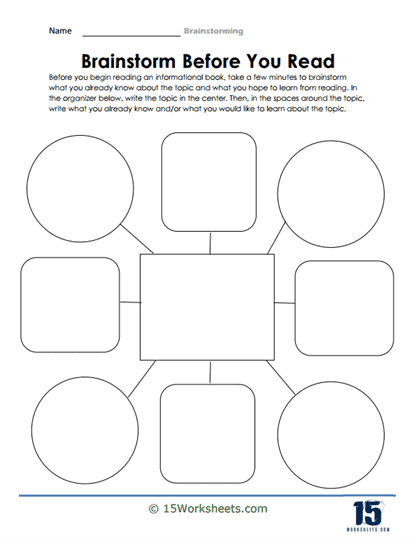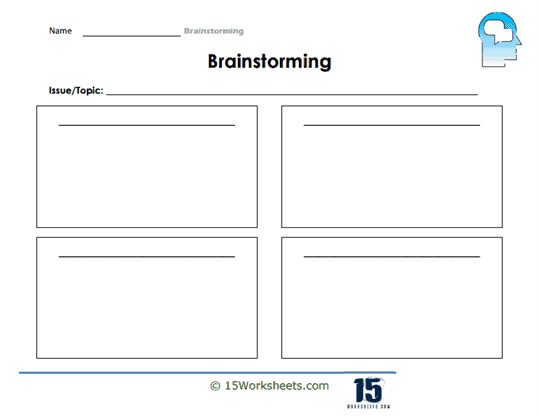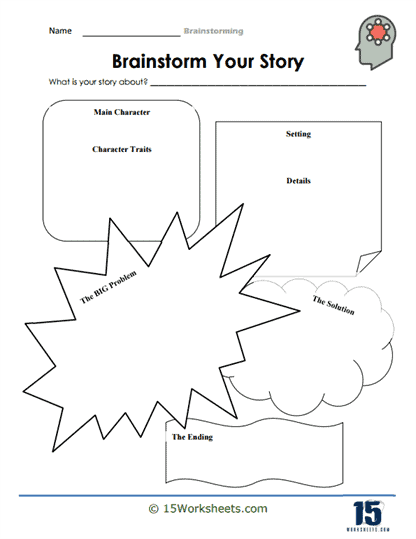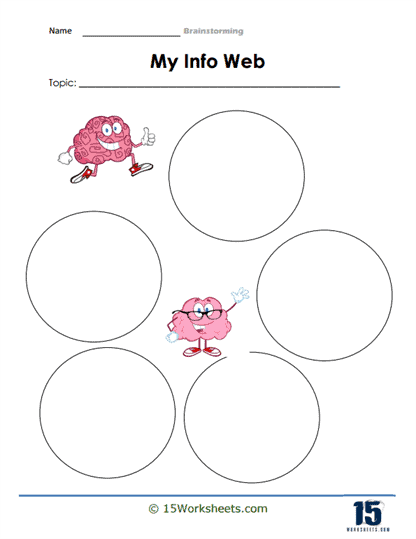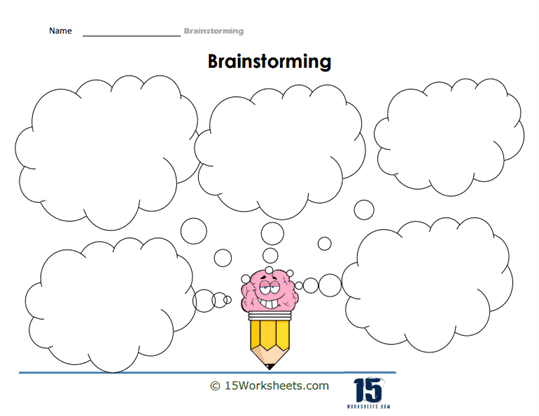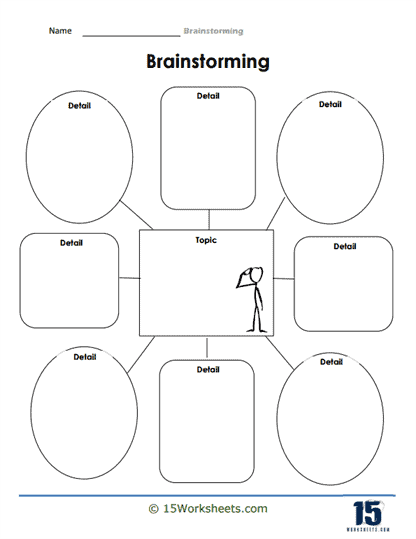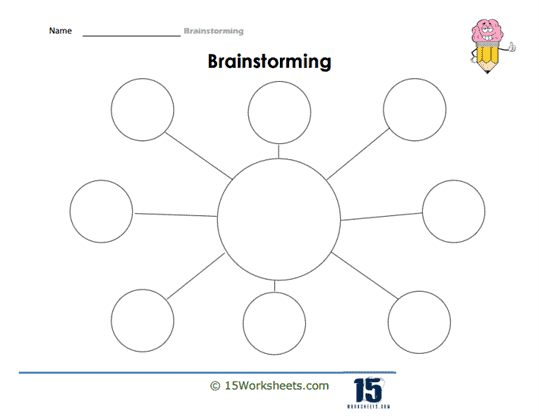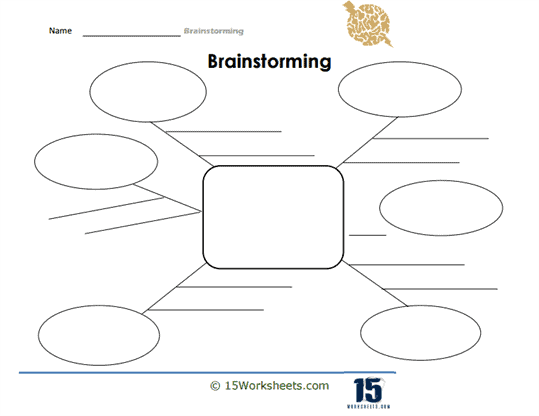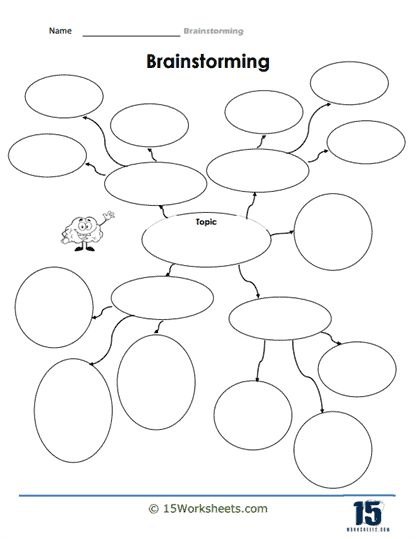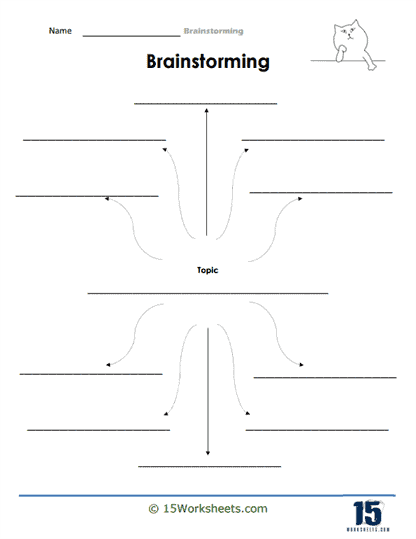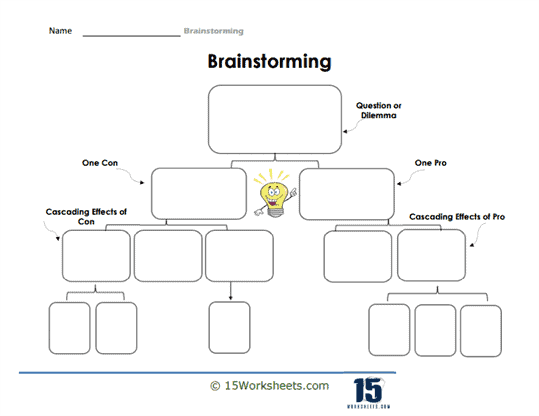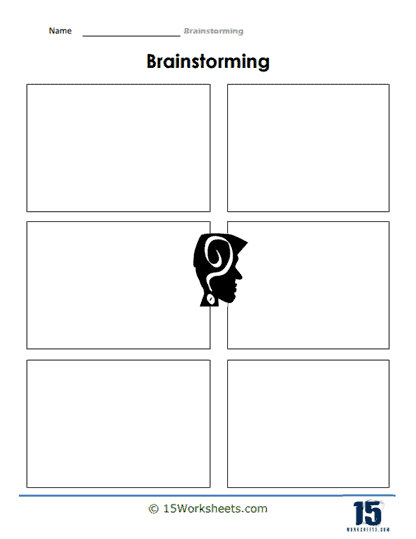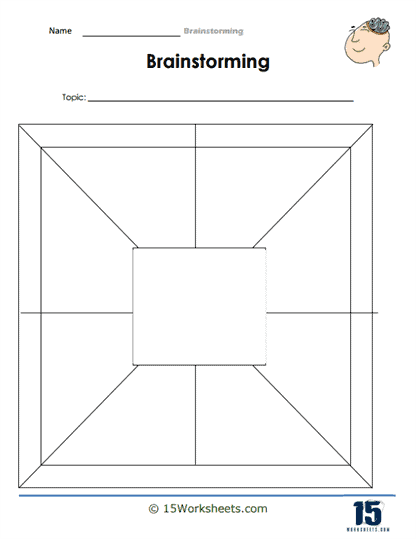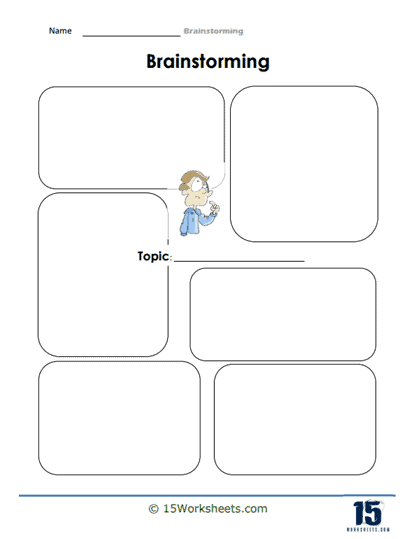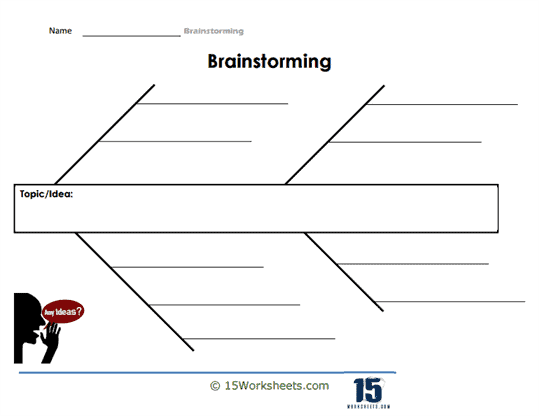Brainstorming Worksheets
All About These 15 Worksheets
Brainstorming is a powerful technique that encourages students to generate ideas, explore possibilities, and think creatively. These series of worksheets have been designed to provide students with a structured platform for brainstorming sessions. Each worksheet offers a visual map, blank boxes, or info webs to help students organize their thoughts and visually represent their ideas. By utilizing these worksheets, students can enhance their critical thinking skills, ignite creativity, and foster collaboration.
The 15 worksheets in this series provide a range of formats to accommodate various brainstorming needs. Whether it’s generating ideas for a project, solving a problem, or exploring different perspectives, each worksheet offers a unique approach to guide students through the brainstorming process. By utilizing visual elements and providing blank spaces, these worksheets promote clarity, organization, and a deeper understanding of the connections between ideas. Through these worksheets, students will:
- Visually connect their prior knowledge and build upon it during the brainstorming process;
- Jot down their ideas freely, fostering a non-linear thought process that encourages creativity and exploration;
- Categorize, group, or link their ideas together, creating a visual representation of their thought process and facilitating a deeper understanding of the topic;
- Explore diverse perspectives and alternative viewpoints;
- Share their visual maps or webs to exchange ideas, provide feedback, and build upon each other’s contributions;
- And gain insights into their thinking patterns, creativity, and problem-solving abilities, fostering personal growth and metacognition.
By utilizing these Brainstorming worksheets, students can unlock their creative thinking potential, explore diverse perspectives, and develop innovative solutions. The visual maps, blank boxes, or webs serve as powerful tools to organize thoughts, stimulate collaboration, and foster a deeper understanding of the brainstorming process. Through these engaging activities, students develop valuable skills that extend beyond the classroom, equipping them to approach challenges with creativity, flexibility, and critical thinking.
What are Brainstorming Worksheets?
Brainstorming worksheets are tools used to facilitate the creative process of generating and organizing ideas for a particular topic or project. They are often used in a group setting, but can also be used individually. Brainstorming worksheets provide a structured framework for individuals or teams to think freely, generate ideas, and organize them in a visual and coherent way.
Brainstorming worksheets typically consist of a central topic or idea in the center of the page, with branches or bubbles radiating outwards to represent related ideas. Participants are encouraged to write down any ideas that come to mind, without judgment or criticism, and to connect related ideas with lines or arrows.
Some benefits of using brainstorming worksheets include:
- Encouraging creativity – By providing a visual and structured framework for generating ideas, brainstorming worksheets can help individuals or teams to think more creatively and generate new, innovative ideas.
- Promoting collaboration – Brainstorming worksheets can be used in a group setting to promote collaboration and communication among team members, leading to a wider range of ideas and perspectives.
- Fostering organization – Brainstorming worksheets help to organize ideas and connect related concepts, making it easier to develop a coherent plan or strategy.
- Reducing inhibitions – By providing a non-judgmental and supportive environment, brainstorming worksheets can help individuals to overcome inhibitions and share their ideas more freely.
- Saving time – By generating and organizing ideas efficiently, brainstorming worksheets can help save time in the planning or problem-solving process.
Here are some examples of brainstorming worksheets:
- Mind maps – These are visual diagrams that allow participants to organize ideas around a central topic or theme, using branches, bubbles, and images to represent related ideas.
- Idea webs – These are similar to mind maps, but use lines to connect related ideas instead of branches or bubbles.
- Clustering – This technique involves writing down related ideas in a cluster or group, and then connecting them with lines or arrows.
- Bullet points – This is a simple format that involves listing ideas in bullet points, with related ideas grouped together.
Brainstorming worksheets can be adapted to suit different topics, purposes, and group sizes, and can be used in a variety of settings, including classrooms, boardrooms, and creative workshops.
What is Brainstorming?
Brainstorming is a creative problem-solving technique that involves generating a large number of ideas in a short period of time. It is a collaborative process that can be done individually or in groups. The main goal of brainstorming is to encourage free-thinking and open discussion, allowing participants to explore various perspectives, concepts, and solutions without fear of judgment or criticism.
Tips For Brainstorming in the Classroom
Set Clear Objectives – Start by defining the purpose of the session. Whether it’s generating topics for a project, solutions to a problem, or creative ideas for a class activity, make sure everyone understands the goal.
Prepare the Space – Arrange the classroom in a way that encourages discussion. A U-shaped or circle seating arrangement can be ideal. Ensure there’s a whiteboard, flip chart, or digital platform to capture ideas.
Establish Ground Rules – Make sure students understand the principles of brainstorming – no idea is too “out there”, no criticism allowed, and everyone’s input is valuable. Encourage active listening.
Warm-Up Activity – Start with a fun, unrelated activity to get their creative juices flowing. It could be a quick word association game, a riddle, or even a short story prompt.
Present the Challenge – Clearly state what they are brainstorming about. Offer a prompt or guiding question to get them started.
Encourage Participation – Create an atmosphere where every student feels comfortable sharing, even if their ideas might seem unconventional. Celebrate all contributions.
Use Techniques to Spur Ideas – Techniques like mind mapping, the “5 W’s” (Who, What, When, Where, Why), or even role-playing can help students think from different angles.
Break into Smaller Groups – Sometimes, students might feel more at ease brainstorming in smaller groups. After a set time, groups can share their ideas with the whole class.
Capture All Ideas – Write down every idea without judgment. This is essential to ensure that all thoughts are valued.
Ask Open-Ended Questions – If the discussion slows, ask questions that can’t be answered with a simple “yes” or “no”. For example, “How might this idea change if we considered a different audience?”
Set a Time Limit – Keep the session energetic by setting a reasonable time limit. This creates a sense of urgency and can help maintain focus.
Review and Group Ideas – Once the brainstorming phase is over, review the ideas. Group similar ones together. This is a chance for students to see common themes or patterns.

